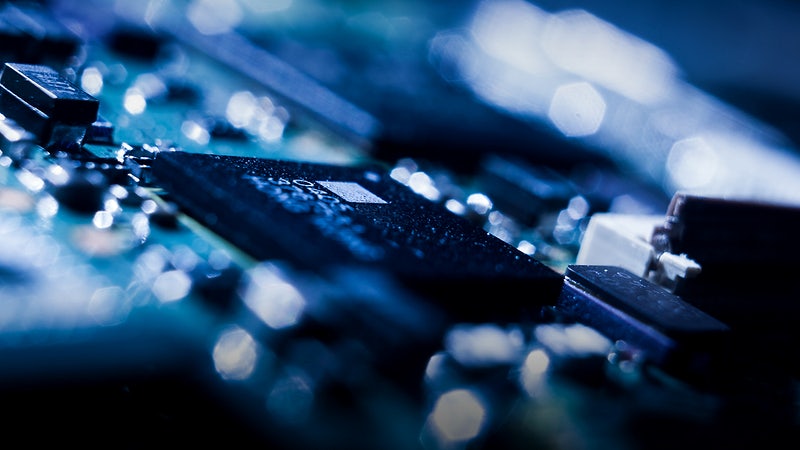Secure wireless networks are a priority for us all; the amount of sensitive information shared through them, and the threat of cyber criminals who see value in that data, is something we can’t afford to ignore. But with WiFi straining to cope with the demands of a world where everything is connected, we are forced to look to other technologies in search of solutions. Here we look at LiFi. Does it have the potential to become the future of secure networks?
How LiFi works
Unlike WiFi, which uses radio waves to wirelessly transmit data, LiFi uses light; by modulating the intensity of a light source faster than the eye can see, the required information can be embedded and streamed to a receiver. Any area that is illuminated is able to receive the signal, but the transmission is stopped by opaque objects such as walls. The connection is two-way because as well as the downlink, an uplink is provided through an infrared transmitter on the receiver.
The increased popularity of LED lights, which can be controlled more precisely than traditional bulbs, has helped make the technology a more practical and economical prospect. LED bulbs fitted with signal processing technology can provide both illumination and data transmission, or the light can turned down to a very low level while still maintaining that transmission. The receiver requires a photosensor which is currently in the form of a USB dongle, but the hope is that that could be incorporated into smartphones and other devices in the future.
Nothing I say leaves this room
From a security perspective, the fact that the signal can’t pass through walls is a very useful feature. No more would you have to worry about it leaking into other buildings or public spaces, potentially giving access to those it wasn’t intended for. Some rooms could even be designated as high-security areas with their own LiFi networks, isolating them from other areas of the building where vulnerable IoT devices might be connected.
Not only that, but the limited illumination area of any access point (up to about 10m2) will allow any environment to be partitioned much more precisely. Assigning users a specific access point means they can be monitored very effectively, and access to certain resources can be made contingent on both a username/password combination and a physical location. Every mobile device can be localized and tracked as it moves between access points, so users could even be required to activate neighboring areas before they connect to a conference room for example, adding an extra layer of security.
Other benefits of LiFi
We’ve all experienced the infuriating problem of slow WiFi, and as more and more devices compete for a piece of the bandwidth, that’s only going to get worse. While the fastest WiFi standard can reach a theoretical 1 Gbps, those maximums are never replicated in real-world performance, with the average US internet connection 18.7 Mbps in the first quarter of 2017. Lab tests have shown that LiFi on the other hand could potentially reach speeds of 224 Gbps, with real-world testing already achieving the 1 Gbps limit of WiFi.
And because the environment can be divided up into those different access points, the available bandwidth can often be reused instead of shared—in effect the "data density" offered by LiFi is much greater than with WiFi. This will allow us to maintain improved browsing speeds even as networks are required to support an influx of IoT devices around our home and offices. Higher data transfer rates mean that more data would be available for use by security systems too, again without impacting network performance.
LiFi also helps us to solve (or at least stave off) another core issue with WiFi, the ‘wireless spectrum crunch’; the shortage of transmission space we face as network traffic increases. While WiFi technology is based on data exchange in the 2.4 and 5 GHz frequency bands (within the radio frequency spectrum), LiFi operates in the spectrum of visible light, between 4 and 8 THz. This is important because the spectrum of visible light is ten thousand times bigger than the radio frequency spectrum, so LiFi provides much more capacity than WiFi.
The operating frequencies of LiFi also mean that it is not subject to interference from appliances like microwaves or cordless phones, and when we combine that with its directional nature, we can ensure it won’t affect other electronic systems.
Applications
That lack of electromagnetic interference is why many see LiFi technology being employed in radio frequency sensitive areas such as planes, hospitals, and power plants, where WiFi can’t be used due to safety or operational reasons. And because of the security benefits, the technology could be ideal for organizations dealing with highly sensitive data such as healthcare or financial records, helping them to meet regulatory standards about isolating that data. It would also be an efficient solution in many cases, thanks to the wide availability of the lighting infrastructure needed and the fact that LED bulbs now serve two functions.
But despite the positives, there are a number of limitations to LiFi that mean it is likely to augment rather than replace WiFi, at least for the foreseeable future. For example, although it is a common misconception that LiFi wouldn’t work at all in sunlight, it can still be affected by very bright light—so don’t expect to see it used in outside public spaces anytime soon. And of course its inability to pass through walls is great for security, but could be impractical for a home set-up, as significant investment would be required to ensure reliable coverage in every room. Most adopters will probably employ LiFi bulbs in one or two rooms in addition to WiFi, at least at first.
When will it be available?
A number of LiFi companies have formed in the last few years, including VLNComm, Velmenni, and PureLiFi, the latter having been set up by the original demonstrator of the technology, Professor Harald Haas from the University of Edinburgh. One of the challenges they are facing is that the type of LEDs currently on the market are proving a bottleneck in achieving high data rates, and this is why are seeing these vendors forge links with traditional lighting manufacturers. PureLiFi have partnered with French light maker Lucibel, while Philips have recently acquired visible light communication specialists Luciom.
The first products came onto the market last year, and many more new models are following in 2017; formal IEEE standards are expected by year-end, which should promote further activity. Something companies are focusing on is reducing the size and visibility of both the transmitter and receiver—eliminating the cumbersome USB dongle and instead incorporating the receiver into device chipsets is seen as the biggest barrier to widespread adoption. Perhaps receivers could be built in to IoT appliances more easily, leaving the WiFi network free for mobile devices?
With one of the technology’s biggest draws being its secure nature, it will be very interesting to see how vendors and cybersecurity specialists look to develop those user monitoring and access restriction features we discussed earlier. It may be a few years until we see it fully take off, but with the global LiFi market expected to grow to $75.5 billion by 2023, the technology certainly has a role to play in secure networks of the future.





